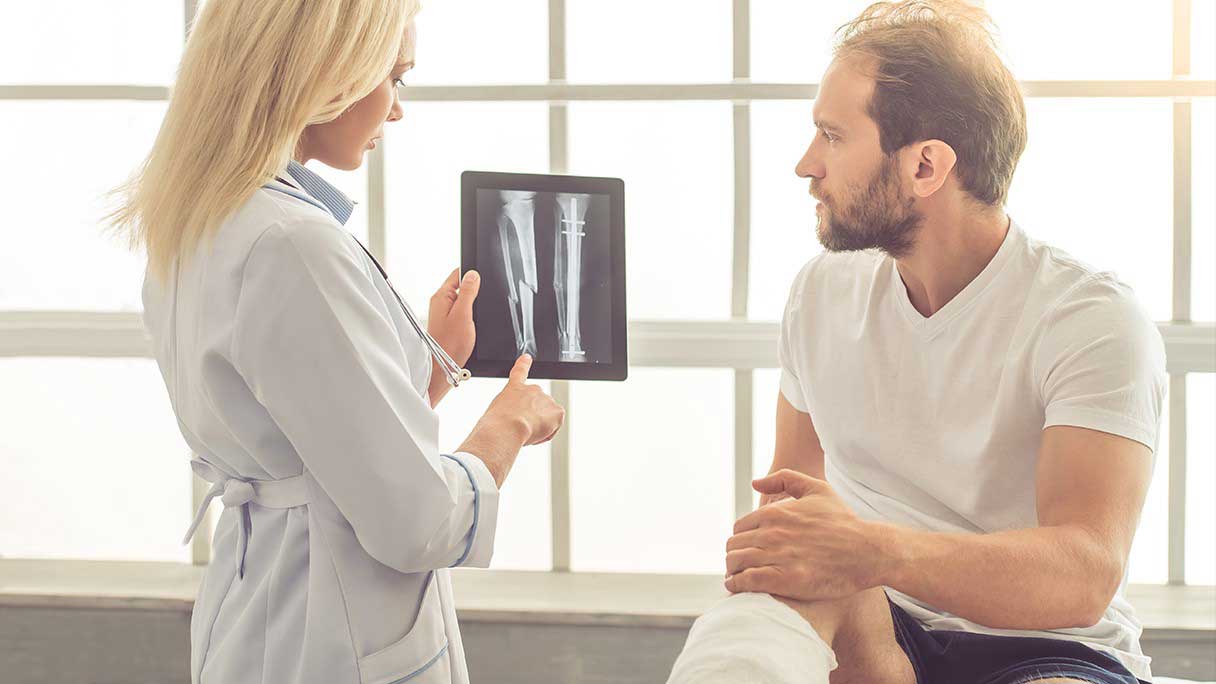While it's common for athletes to experience muscle and bone injuries during the course of their activities, the average active person can also suffer injuries that can lead to chronic pain, reduce function and disrupt their quality of life.
For those who want to avoid extreme treatments such as surgery; treat common tendon, ligament and muscle injuries or conditions; and treat conditions like hair loss and sexual dysfunction, PRP therapy,1 which harnesses the body's own healing properties, is worth considering.
What Is PRP Therapy?
PRP, short for platelet-rich plasma therapy, extracts the liquid part of the blood, known as plasma, and reduces it to just the platelets, a factor in blood that helps clotting and healing. That platelet-dense product is reinjected into the patient's affected body part, often with a pain-reducing medicine, to encourage healing.1 Depending upon where the injury is, some healthcare providers may use ultrasound to direct the injection to the areas where it will most impact healing.
What makes platelets so helpful in healing, researchers believe, is that they also contain proteins called growth factors, which have been shown to help bodies heal from injuries.1
What conditions can PRP injections treat?
Research is still being conducted on the efficacy of PRP therapy, but some studies have shown that it can be used to treat a number of issues, including muscle and tendon injuries, chronic pain associated with fibromyalgia and back pain, dental procedures, cosmetic treatments such as hair restoration and skin rejuvenation, and even sexual dysfunction.
- Orthopedic injuries: Probably the most common application of PRP therapy is for musculoskeletal conditions such as tendinitis (“tennis elbow," for example), arthritis and muscle strains.2
- Chronic pain conditions: Because PRP therapy is produced from the patient's own blood, it is often considered a good alternative in treating chronic pain conditions such as fibromyalgia and back pain. PRP therapy may be an alternative treatment to steroid injections that eventually wear off because the shots may reduce inflammation in the body.3
- Cosmetic treatments: PRP may also treat other non-pain-related conditions such as hair restoration and skin rejuvenation. One review found that patients given PRP therapy saw increased hair growth, and the higher the number of platelets, the greater the impact on hair density, follicle diameter and more.4
- Other conditions: PRP may also be promising for other conditions unrelated to pain or musculoskeletal issues. PRP therapy is being tried as a treatment for such conditions as erectile dysfunction after a small study found that it helped with symptoms and patients had no adverse effects.5 Additionally, PRP is sometimes used in dental procedures and dental surgery to reduce inflammation and encourage healing.6
How Much Do PRP Injections Cost?
PRP therapy is typically charged per injection.7 The cost of a single PRP injection may range from $500 to $2,500, depending on such factors as location, the credentials and expertise of the practitioner, facilities and other details. The median cost for PRP therapy is around $630.8 Most insurance companies do not cover PRP therapy.7
4 Big Benefits of PRP Therapy
PRP therapy may offer a variety of benefits to patients, though it should be noted that there is still no large body of research on the therapy, and patients should moderate their expectations.
1. Reduced pain and inflammation
Many practitioners recommend PRP therapy, claiming that it can help reduce inflammation, and thus, pain. Injury and illness can cause acute and chronic pain in and around an injury site long after the initial injury has subsided or healed without other interventions.
Adding in PRP therapy, by the stimulation of fibroblasts and endothelial cells in the growth factors in the PRP, can then help reduce inflammation in the body.9 These growth factors also help the formation of new blood cells.
With reduced inflammation can come reduced pain, though it can take up to several weeks after PRP injections to feel the effects.9
2. Accelerated healing
By stimulating growth factors through PRP therapy and reducing inflammation, experts argue that this can speed the healing process.9 It may also enable patients to cut down on, or eliminate, pain medication.
3. Minimal risk of adverse effects
What makes PRP therapy a good choice for almost anyone is that it comes with minimal risk of adverse effects because the plasma and platelets come from the patient's own body.2
4. Potentially long-lasting results
Results may not be instantaneous with PRP therapy. On average, it can take between several weeks for joint or tendon injections, and up to six months for scalp injections to see results.2 Research is inconclusive about the exact length of time PRP therapy results last, but it's possible they can last between six and nine months.10
Multiple treatments are likely to be necessary. However, since they tend not to have any adverse side effects, there is little harm in getting multiple injections over time.2
How PRP Therapy Works
The kind of consultation you have for PRP therapy will depend upon what you're treating. You may see your regular doctor, a nurse or nurse practitioner, an osteopath, a dentist or oral surgeon, a dermatologist — essentially, you would see the specialist related to your injury.11
Ideally, you will have a consultation with the appropriate medical professional, and then you will want to:12
- Stop taking anti-inflammatory medications (such as ibuprofen or aspirin) a minimum of five days before the procedure, as well as stop blood thinning herbs or supplements.
- Unless otherwise advised by your doctor, you'll want to stop systemic steroids up to two weeks before the procedure, and stop steroid injections a minimum of one month before.
- Come to your procedure well hydrated and fed.
PRP preparation and procedure
For the preparation and injection part of the procedure, your blood will be extracted in your provider's office and sent to a centrifuge to pull the platelets away from other blood components and isolate the platelet-rich plasma. Then, your PRP solution will be injected into your injury site or site of treatment, possibly using ultrasound guidance and X-rays.13
Most of the time, you are given a local anesthetic to numb the area for the injection.14 The procedure should not be terribly painful, though some discomfort is possible.
Post-treatment care for PRP therapy
For muscle and tendon issues, it's recommended that the patient avoid exercise or weight-bearing activities for a couple of days up to a week after receiving the injection, depending on what part of the body has been treated.15
For people getting PRP therapy for hair growth, recommendations include avoiding vigorous exercise, sun or heat exposure for a couple of days after treatment, and to use only pH-balanced shampoos. It is also recommended to avoid alcohol, caffeine and smoking for three days after, and avoid using hair growth products such as minoxidil or hair color for at least three days after.16
PRP Therapy Risks and Side Effects
In general, PRP therapy comes with very low risks and few side effects. Since the product is made from the patient's own cells and plasma, there's very little likelihood of an allergic reaction. However, because the procedure involves receiving a blood draw, there may be mild soreness or bruising at the site and/or at the injection site. It's best to be hydrated and eat beforehand to prevent dizziness.2
Possible but uncommon risks of PRP injections include:2
- Bleeding
- Tissue damage
- Infection
- Nerve injuries
Not everyone is a good candidate for PRP therapy. You are not a good candidate if you:17
- Currently have, or have had, cancer
- Suffer from blood-related conditions, such as anemia or leukemia
- Have an infection in the treatment site
- Are an active smoker
Financing PRP Injection Therapy With the CareCredit Credit Card
When getting PRP therapy or another cosmetic procedure, the CareCredit credit card can help you pay for costs not covered by insurance.* Apply today and use our Acceptance Locator to find a doctor or cosmetic specialist near you that accepts CareCredit. Continue your wellness journey by downloading the CareCredit Mobile App to manage your CareCredit account, find a provider on the go, and easily access the Well U hub for more great articles, podcasts, and videos.
Author Bio
Jordan Rosenfeld has been freelance writing for 21 years about finances, health, education and more. Her work has appeared in The Atlantic, The Billfold, Good Magazine, GoBanking Rates, Daily Worth, Quartz, Medical Economics, The New York Times, Paypal, The Washington Post and more.







